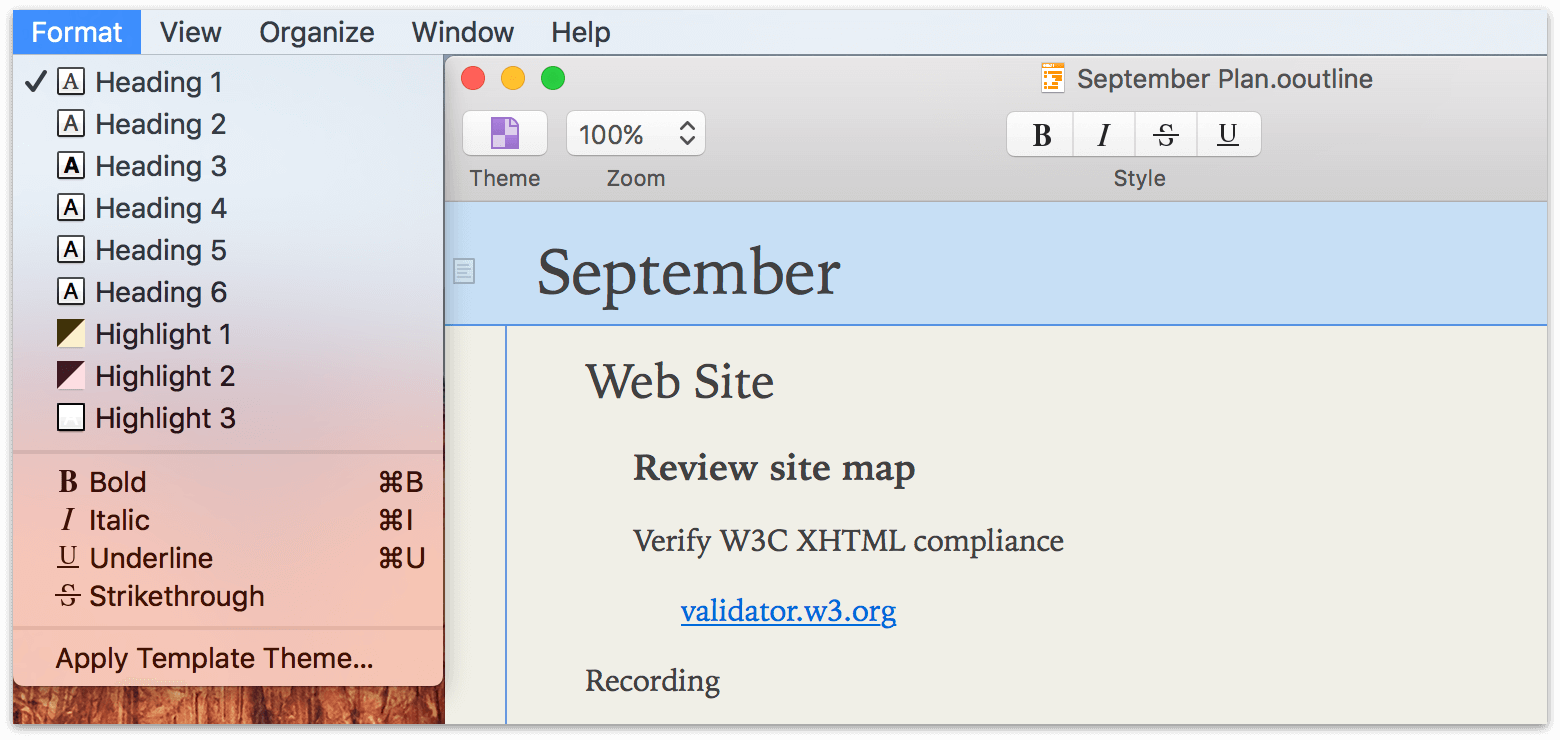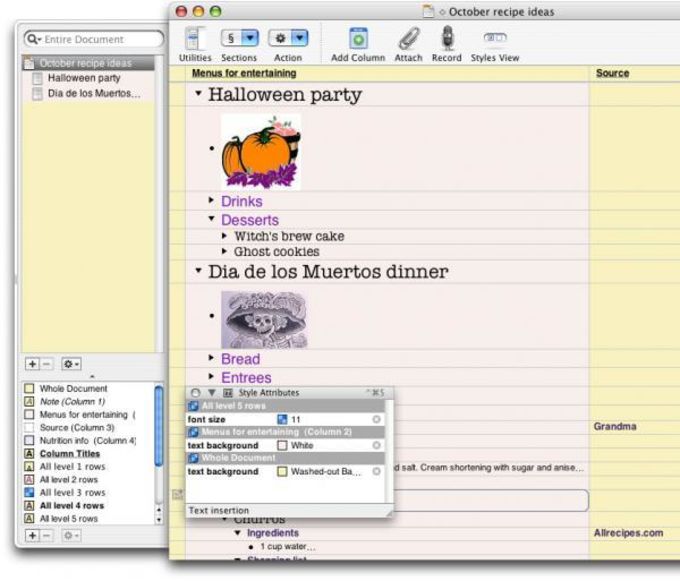

The whole document style sets the default styling for the rows, the row notes, the columns, and the column titles. Whole document is part of the document styles styling. The whole document style and the style hierarchy are useful constructs to help you get started with styling your OmniOutliner document. Named styles will be saved if you create a template from your document, and so can be used in other documents you create. Any place that emphasis was applied in the document will now show bolded text instead of italicized. Later, you decide that emphasis should use bolded text instead, and you apply that change to the named style. For instance, let’s say you create a named style called emphasis, and the styling is italicized text. Once a named style is applied to a piece of text, that text’s style will be updated when the named style is updated. These styles can be re-named, moved, deleted, applied, and unapplied at will. They can be applied to any row, or piece of text. Named styles are custom styles that are saved in the left sidebar. When you change the name of the column header, then the style name changes to match the new column header name. Column # - Each additional column after the topic column can be assigned its own styling.If you change the name of the topic column, the style name changes to match the column heading. Topic - Topic style defines the style for the topic column specifically.Notes - Notes style defines the style for all the notes of all your rows.Column Titles - Column titles style defines the style of all the column headers.

If you add 9 indentations - 9 “children” or levels of hierarchy - you will see Level 1 Rows, Level 2 Rows, Level 3 Rows, … Level 10 Rows in the Styles sidebar. For example, if there are no indented rows in a document, you will only see “Level 1 Rows” in your Styles guide. There will be as many level # rows styles as you have levels of hierarchy. Level # Rows - Level # rows styles are applied by row level or indent.that any new section of text will use, unless otherwise defined. Whole Document - The whole document style is the basic unit of your document: the default font family, font size, line height, etc.Here are descriptions of how each of the document styles are defined:
Omnioutliner essentials set heading styles pro#
In the Pro edition, you can apply character and named styles overrides from the styles sidebar.

In the Essentials edition, themes are the basic method for styling your document, and you can apply character and named styles overrides from the Format menu. Themes use document styles as their basis. Themes are groups of pre-set styling, and can be applied to any document.


 0 kommentar(er)
0 kommentar(er)
